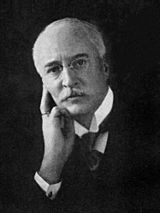Vegetable oil fuel facts for kids
Did you know that vegetable oil, like the kind you might use for cooking, can also be used as a special type of fuel? When vegetable oil is used directly in engines or heaters, it's called straight vegetable oil (SVO) or pure plant oil (PPO).
Regular diesel engines need a few changes to run on SVO. This is because vegetable oil is thicker than regular diesel. It needs to be heated so it flows easily and sprays correctly inside the engine. If it doesn't spray well, it can cause problems like carbon buildup, which can harm the engine. Vegetable oil can also be mixed with regular diesel or turned into other fuels like biodiesel.
Contents
History of Vegetable Oil Fuel
The inventor of the diesel engine, Rudolf Diesel, actually designed his engine to run on vegetable oil! He hoped this would make his engines useful for farmers, who could grow their own fuel. In 1912, he said that vegetable oils might become as important as mineral oils one day.
Later, when there were times of low oil supply, people looked into using vegetable oil as a fuel again. This happened in the 1930s and 1940s, and again in the 1970s and early 1980s. In the 1970s, a German company called Elsbett even started helping people use straight vegetable oil in their cars. During a conflict in the 1990s, people on an island called Bougainville used coconut oil to power their vehicles because they couldn't get regular fuel.
How Vegetable Oil is Used as Fuel
Engines with Special Changes
Most diesel car engines can use straight vegetable oil (SVO) if they are changed a bit. The main thing is to make the SVO less thick. This is usually done by heating it up, often using the engine's own heat or electricity. If the oil isn't heated, it won't spray correctly, which can lead to incomplete burning and carbon buildup.
A common way to do this is to add a second fuel tank. You start the engine on regular diesel, then switch to vegetable oil once the engine is warm. Before turning the engine off, you switch back to diesel. This makes sure no vegetable oil is left in the engine when it cools down. In cold places, the fuel lines and tank for the vegetable oil also need to be heated so the oil doesn't get too thick or even freeze.
Some special changes allow engines to run on 100% pure plant oil even in cold temperatures. For example, some Volkswagen TDI engines can be changed to use only vegetable oil. To keep these engines working well for a long time, it's important to change the oil more often and take good care of the engine.
Older Engines Without Changes
Many older cars with certain types of diesel engines can run on pure SVO without many changes, except in very cold weather. Cars like some Mercedes-Benz models from the 1980s and cars with the PSA XUD engine often work well. These engines are usually built in a way that helps them handle the thicker oil. Keeping the engine well-maintained, especially the fuel injectors and cooling system, helps them last longer.
Mixing Vegetable Oil with Other Fuels
Vegetable oils are thicker than regular diesel. To make them work better in engines, they can be mixed with thinner liquids like diesel fuel or kerosene. This mixing helps to reduce how thick the vegetable oil is. However, some people have found that using these mixtures can cause more wear and tear on fuel pumps and other engine parts.
Heating Homes with Vegetable Oil
Fuels made from plants that are used for heating (not for transport) are sometimes called bioliquids.
Many home furnaces and boilers that burn heating oil can be changed to burn biodiesel or filtered, used vegetable oil (WVO). New burners can use up to 20% biodiesel. Using higher amounts of vegetable oil can sometimes clog filters because biodiesel can clean out old tar from the fuel tank. If you clean the used vegetable oil yourself, it can save a lot of money. Many restaurants will even give away their used cooking oil for a small fee. Turning used oil into biodiesel involves some chemical steps. Burning filtered used vegetable oil directly is harder because it's thicker and needs more heat to burn, but it can be done with the right equipment.
Making Heat and Power Together
Some companies make generators that run on plant oils. These generators are designed to capture the extra heat they produce, which can then be used for heating buildings. This way, you get both electricity and heat from the same fuel source.
Properties of Vegetable Oil Fuel
The main type of SVO used in the UK is rapeseed oil, which gets thick around -10°C (14°F). Sunflower oil, which gets thick at a slightly lower temperature, is being looked at for better cold-weather starting. However, oils that stay liquid in colder temperatures can sometimes form sticky substances more easily when exposed to air.
How it Affects Engine Parts
When vegetable oil forms sticky substances, it can cause serious problems for engine parts, like the fuel pump or injector tips. Most issues like rust or damage to metal parts are caused by water in the fuel or using the wrong type of pipes (like copper or zinc), which can make the oil gel.
Effect of Temperature
Some island nations in the Pacific use coconut oil as fuel. This helps them save money and rely less on imported fuels. Coconut oil can only be used where temperatures stay above 17°C (63°F), unless special heating kits are used. The same methods used to make other vegetable oils work in cold climates can be used for coconut oil.
Where to Get Vegetable Oil Fuel
Recycled Vegetable Oil
Recycled vegetable oil, also called used vegetable oil (UVO) or waste vegetable oil (WVO), is collected from restaurants and factories that use it for cooking.
Around the year 2000, the United States produced over 11 billion liters (2.9 billion US gallons) of recycled vegetable oil each year. This mostly came from large fryers in places like potato processing plants and fast food restaurants. If all this used oil could be recycled and used as fuel, it could replace a small part of the oil used in the US. Using recycled vegetable oil instead of regular gasoline could also help lower gasoline prices by reducing the demand for petroleum.
New Vegetable Oil
New vegetable oil, also called pure plant oil or straight vegetable oil, is made directly from plants just to be used as fuel. Unlike used vegetable oil, it's not a leftover from other industries. This means that how much new vegetable oil can be produced for fuel depends only on how much can be grown. However, using new vegetable oil for fuel means there's less of it available for other uses, like cooking.
Rules About Vegetable Oil Fuel
Fuel Taxes
The taxes on SVO/PPO used as road fuel are different in every country. Some countries might not even know it's being used, or they might think it's too small a amount to worry about. Germany used to have no tax on it, which helped it become a leader in developing this type of fuel.
See also
 In Spanish: Aceite vegetal combustible para niños
In Spanish: Aceite vegetal combustible para niños



